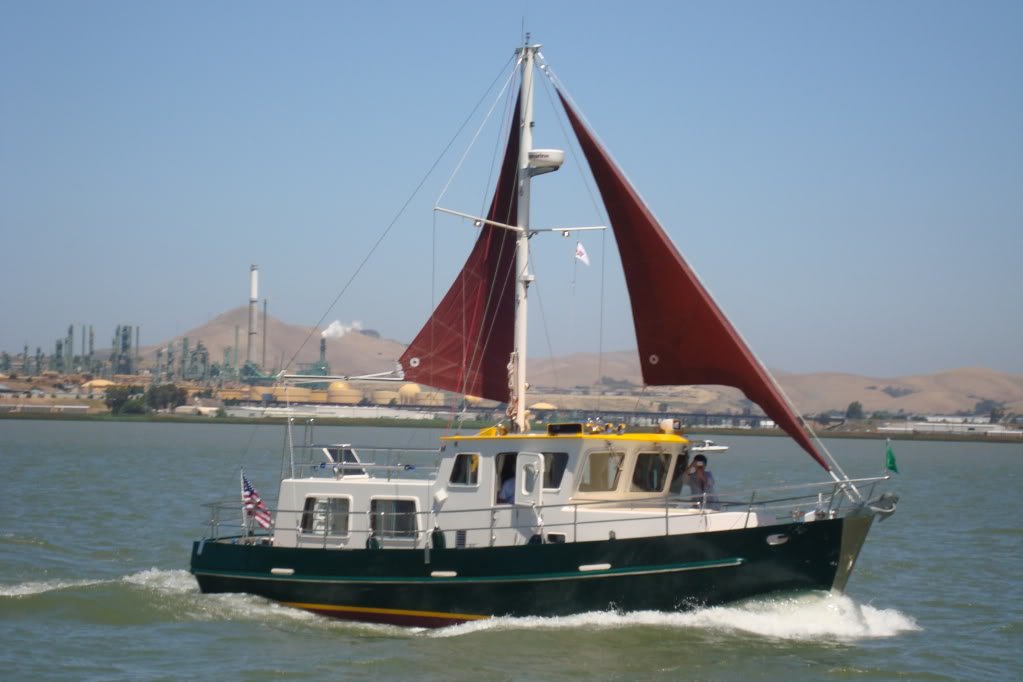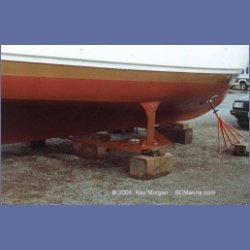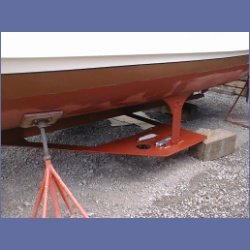ksanders
Moderator Emeritus
I know this has been discussed before, but everybodies situation is different. Here's mine.
Well, the admrial does not really like the roll of our boat in the open ocean, in a beam sea.
Here's what happens.
In a moderate beam sea of around 4' (long ocean swells) which is pretty common on a nice day our 4788 gets into what I've heard describes as "parasitic rolling". This is most pronounced at rest (when we're fishing), and continues through displacement speeds. Running the boat harder, say 13-14 knots causes the stern to squat and the rolling stops.
What I've noticed is that the seas are timed just right for the natural roll period of our soft chined boat and the rolling seems to be magnified. Its amazing just how much this boat rolls in what seem to be pretty calm seas. Actually it rolls more than our old 28' cabin cruiser in these specific conditions.
Because of this I'm going to invest in some kind of stabilization.
I have a quote from the folks that make the Mitsibushi gyro type unit at $43K. Installation would be really easy. I'm skilled enough to do the job no problem. I have room for the beast in the lazarette right over a couple of stringers. This would produce significant roll reduction both at rest and under way. The most roll reduction is in the exact seas I'm describing. I have a simulation from Mitsubishi with graphs I'll try to figure out how to post.
Another option is the Naiad stabilizers. I've talked with the folks at Naiad and am having my favorite boatyard work up a estimate. I'm assuming the estimate will be in the same ballpark, possibly a tad more.
The mitsubishi seems to fill my needs better, but its a newer technology. The fins are proven technology, but won't help while fishing, or at anchor.
Which one would you go with???
Well, the admrial does not really like the roll of our boat in the open ocean, in a beam sea.
Here's what happens.
In a moderate beam sea of around 4' (long ocean swells) which is pretty common on a nice day our 4788 gets into what I've heard describes as "parasitic rolling". This is most pronounced at rest (when we're fishing), and continues through displacement speeds. Running the boat harder, say 13-14 knots causes the stern to squat and the rolling stops.
What I've noticed is that the seas are timed just right for the natural roll period of our soft chined boat and the rolling seems to be magnified. Its amazing just how much this boat rolls in what seem to be pretty calm seas. Actually it rolls more than our old 28' cabin cruiser in these specific conditions.
Because of this I'm going to invest in some kind of stabilization.
I have a quote from the folks that make the Mitsibushi gyro type unit at $43K. Installation would be really easy. I'm skilled enough to do the job no problem. I have room for the beast in the lazarette right over a couple of stringers. This would produce significant roll reduction both at rest and under way. The most roll reduction is in the exact seas I'm describing. I have a simulation from Mitsubishi with graphs I'll try to figure out how to post.
Another option is the Naiad stabilizers. I've talked with the folks at Naiad and am having my favorite boatyard work up a estimate. I'm assuming the estimate will be in the same ballpark, possibly a tad more.
The mitsubishi seems to fill my needs better, but its a newer technology. The fins are proven technology, but won't help while fishing, or at anchor.
Which one would you go with???
Last edited:



